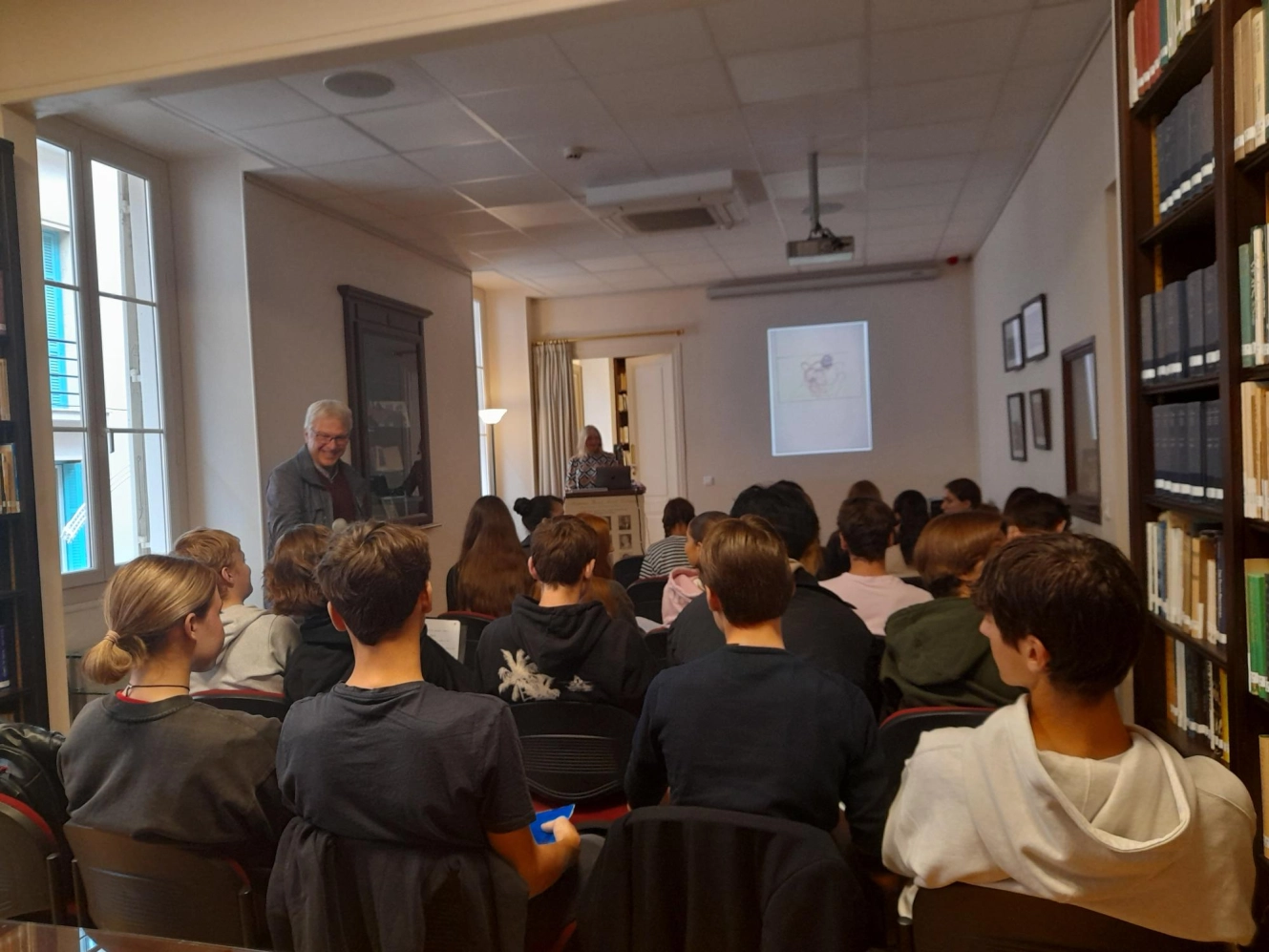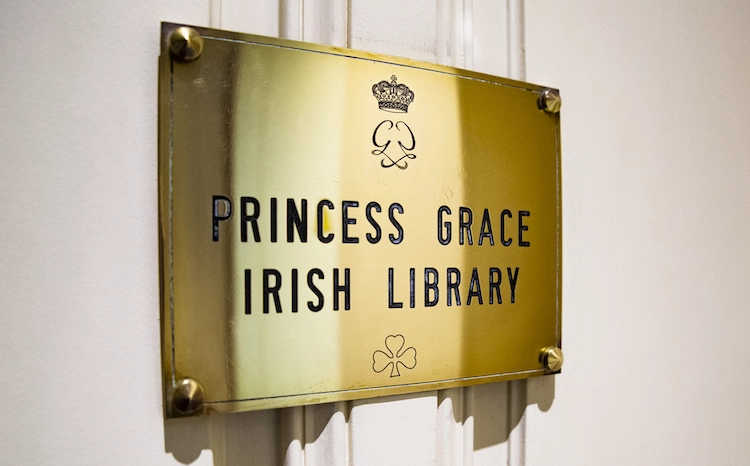Conférence à la Bibliothèque Irlandaise Princesse Grace
Publié le 5 mai 2024 à 14h53 - Mis à jour le 5 mai 2024 à 14h54
Le groupe de 1ère euro de M. Ravera a été invité à la Bibliothèque Irlandaise Princesse Grace afin d’assister à une conférence du Dr Margarita Cappock, historienne de l’art, conservatrice et écrivaine
Le groupe de 1ère euro de M. Ravera a été invité à la Bibliothèque Irlandaise Princesse Grace afin d’assister à une conférence du Dr Margarita Cappock, historienne de l’art, conservatrice et écrivaine, sur le peintre Francis Bacon, en lien avec l’axe ‘Art et Pouvoir’ du programme d’anglais de 1ère.
Le compte rendu suivant, rédigé par Martina, élève de ce groupe, a été jugé le meilleur.
"Dr. Cappock's captivating talk at the Irish Library took us into the fascinating world of Francis Bacon, an artist whose artwork themes were strongly influenced by his personal life and notions of supreme power.
Even though Francis Bacon did not receive a formal art education, his artistic career began at the age of twenty when he became a furniture designer - a path that gave him considerable recognition. His tumultuous youth led him to leave his family at sixteen, marking a pivotal moment in his journey of self-discovery. He later went to Paris and eventually achieved noteworthy success.
The atmosphere in his studio evokes an oasis of artistic passion compared to the peacefulness of his home. This intimate glimpse into his artistic sanctuary revealed a man unbound by formal training yet possessing an innate ability to transcend conventional artistic norms. Bacon's studio served as a repository for his literary and cinematic interests; upon examination, crime novels were found scattered on the floors. He cherished the idea of becoming a film director.
The subjects of Bacon's portraits were deeply personal, representing individuals with whom he shared intimate connections. Among them, Peter Lacey and George Dyer stood out as poignant figures. Additionally, Lucian Freud, a close friend, exerted a profound influence on Bacon's work. The artists who most shaped Bacon's style included Michelangelo, Alain Resnais, and Picasso.
Most striking were Bacon's vivid portrayals of Popes, symbolizing authority within the Christian realm. It was fascinating to discover how Bacon's preoccupation with Christian emblems subtly mirrored the influential hold of the Church on Irish society, reflecting a connection to his roots. Intriguingly, Bacon's fascination with political leaders and influential figures contrasted with his firm refusal of knighthood.
In the 20th century, Bacon stood out as a unique figure. In his paintings, he does not convey a specific message to the viewer, but rather prompts us to envision a hidden message. His selfcritical nature highlights his legacy as an artist who challenged the conventions of his time, leaving a lasting impression on the world of art."

